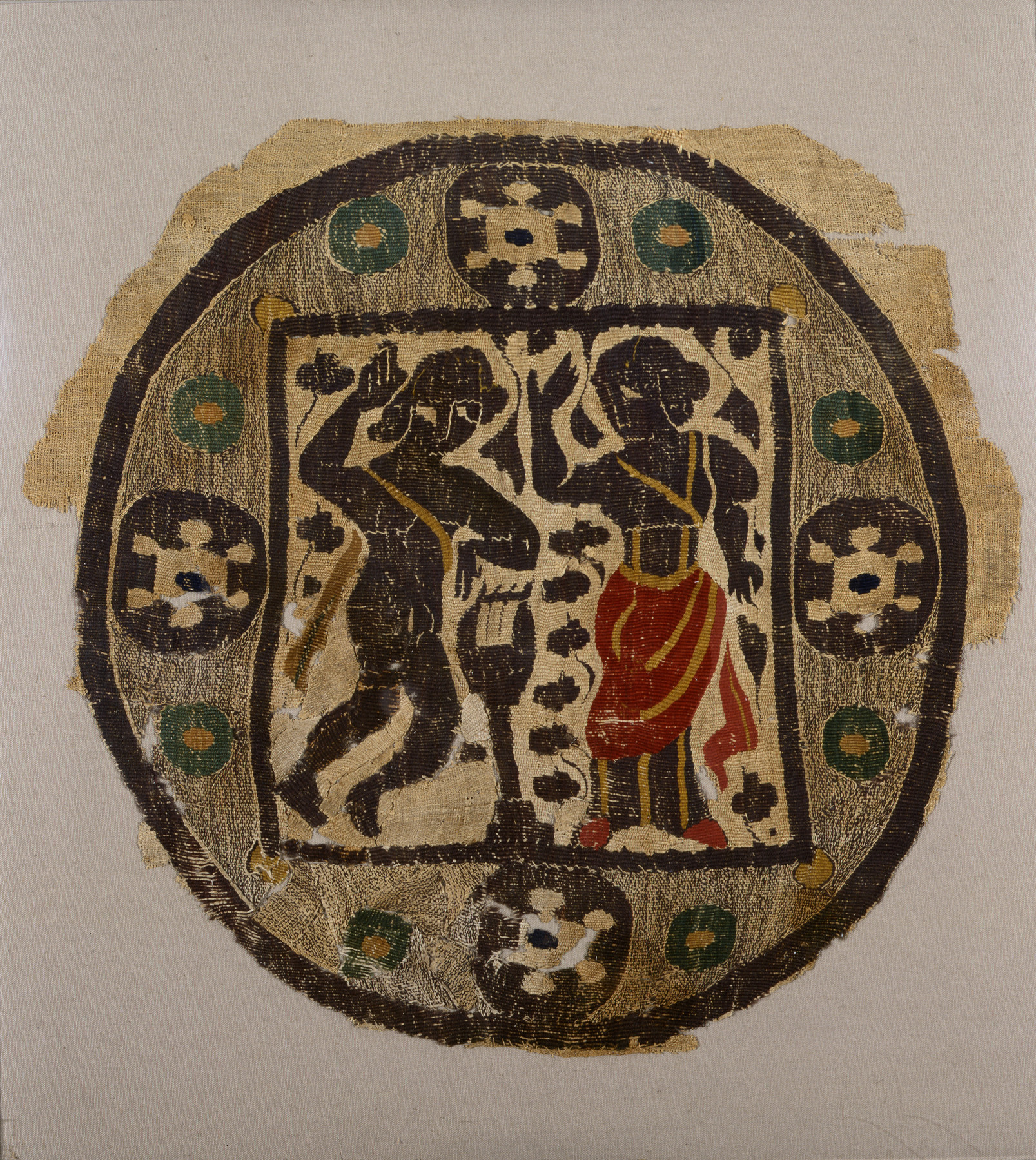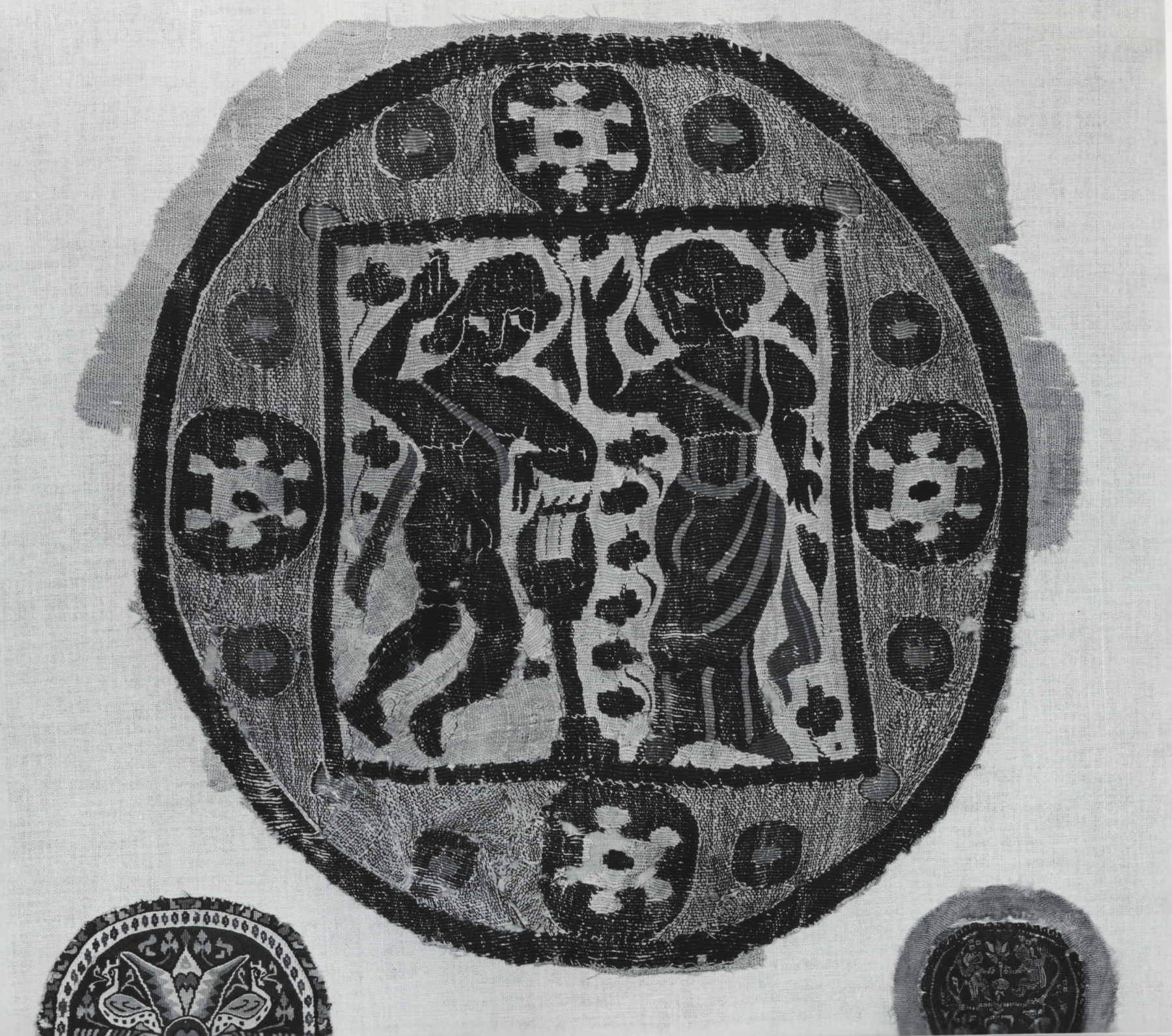Wall Hanging or Curtain Fragment with Orpheus and Eurydice
(Byzantium and Early Russia, Textiles and Furniture )
This tapestry roundel was likely one of a set that decorated a larger household textile, such as a curtain or wall hanging.
Curtains and wall hangings were used in private homes, as well as in public and religious buildings, to prevent drafts, divide spaces, and provide privacy. The tapestry weave of this piece is ideal for such textiles, as it produces a design that can be viewed from either side.
Though the majority of the population was Christian by this time, figures from classical mythology continued to decorate objects of daily use. Especially popular were portrayals of pairs of famous lovers. Here, the attribute of the lyre identifies the male figure as either Orpheus or Apollo, indicating that the female must be either Eurydice (Orpheus's wife) or the nymph Daphne (loved by Apollo), or perhaps one of the nine Muses, frequently associated with Apollo.
Provenance
Provenance (from the French provenir, 'to come from/forth') is the chronology of the ownership, custody, or location of a historical object. Learn more about provenance at the Walters.
Henry Walters, Baltimore [date and mode of acquisition unknown]; Walters Art Museum, 1931, by bequest.
Exhibitions
| 2002-2003 | Byzantine Women and Their World. Harvard Art Museums, Cambridge. |
| 1989 | Beyond the Pharaohs: Egypt and the Copts in the Second to Seventh Centuries A.D.. Museum of Art, Rhode Island School of Design, Providence; The Walters Art Gallery, Baltimore. |
Geographies
Egypt (Place of Origin)
Measurements
19 1/16 x 20 7/16 x 1/16 in. (48.4 x 51.9 x 0.1 cm)
Credit Line
Acquired by Henry Walters
Location in Museum
Not on view
Accession Number
In libraries, galleries, museums, and archives, an accession number is a unique identifier assigned to each object in the collection.
In libraries, galleries, museums, and archives, an accession number is a unique identifier assigned to each object in the collection.
83.466




